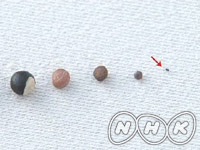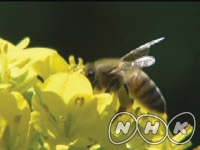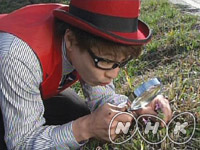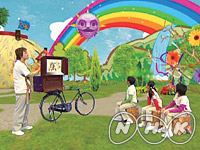Education
![]()
What and Why | Let's Tackle Scientific Problems | Junior High School Science | Only One Earth | Science Club | Whiz Bang Science | Maths Wonderland | Digital Pictorial Book - Nature in Japan - | Experiments Are Fun | Pythagora Switch | Pythagora Switch II | Pythagora Switch III | Pythagora Switch IV | Let's Get Movin' | Science Sleuth | ABU Voyage to the Future | The Science Station | We Love Science | Joule & Professor Watt | Wonderful Science | KIDS SURVIVAL SCHOOL | What Can We Do? Our Planet’s Future | Listen to the Earth | The Power to Save Lives in Disasters | Let's enjoy Math with Barky the Dog | LIFE IS A CHALLENGE | Bravo to Music! | TAKE TECH | Viewpoint Science | Story Land | Endless Wonders | TEXICO |
 Wonderful Science | The Power of Wind
Wonderful Science | The Power of Wind
ED201104![]()
ふしぎがいっぱい | 風の力 [NHK]
![]()
![]()


|Length : 10min. |Year : 2011 |
We will learn about the wind and how different strengths of wind affect the world we live in.
 Wonderful Science | The Body of Plants
Wonderful Science | The Body of Plants
ED201103![]()
ふしぎがいっぱい | 草花のからだ [NHK]
![]()
![]()


|Length : 10min. |Year : 2011 |
We will learn how plants grow. We will grow plants and examine them from root to stem to leaf.
 Wonderful Science | Marvelous Seeds
Wonderful Science | Marvelous Seeds
ED201102![]()
ふしぎがいっぱい | たねのふしぎ [NHK]
![]()
![]()


|Length : 10min. |Year : 2011 |
We will plant seeds and watch them germinate. We will discover how they grow.
 Wonderful Science | Creatures at Our Feet
Wonderful Science | Creatures at Our Feet
ED201101![]()
ふしぎがいっぱい | ひらけ!ふしぎのとびら [NHK]
![]()
![]()


|Length : 10min. |Year : 2011 |
By examining the miniature world at our feet, we will learn about various colors, shapes.
Amazing Human Powers
ED190901![]()
からだのちから [NHK]
![]()
![]()


|Length : 25min. |Year : 2009 |
A science program for 10- to 13-year olds set in a virtual studio where children learn about the wonders of human power from the power masters.
[1. Are You Chewing?]
This episode features "chewing." Some studies suggest that human evolution is attributed to the development of the habit of chewing. Unfortunately, today's dietary life require less chewing, which has been tied to certain health concerns.
By introducing a country where people are cavity-free even at the age of 50, and methods on how to chew properly, this episode takes viewers on a fun "chewing" tour to show the benefits of chewing.















